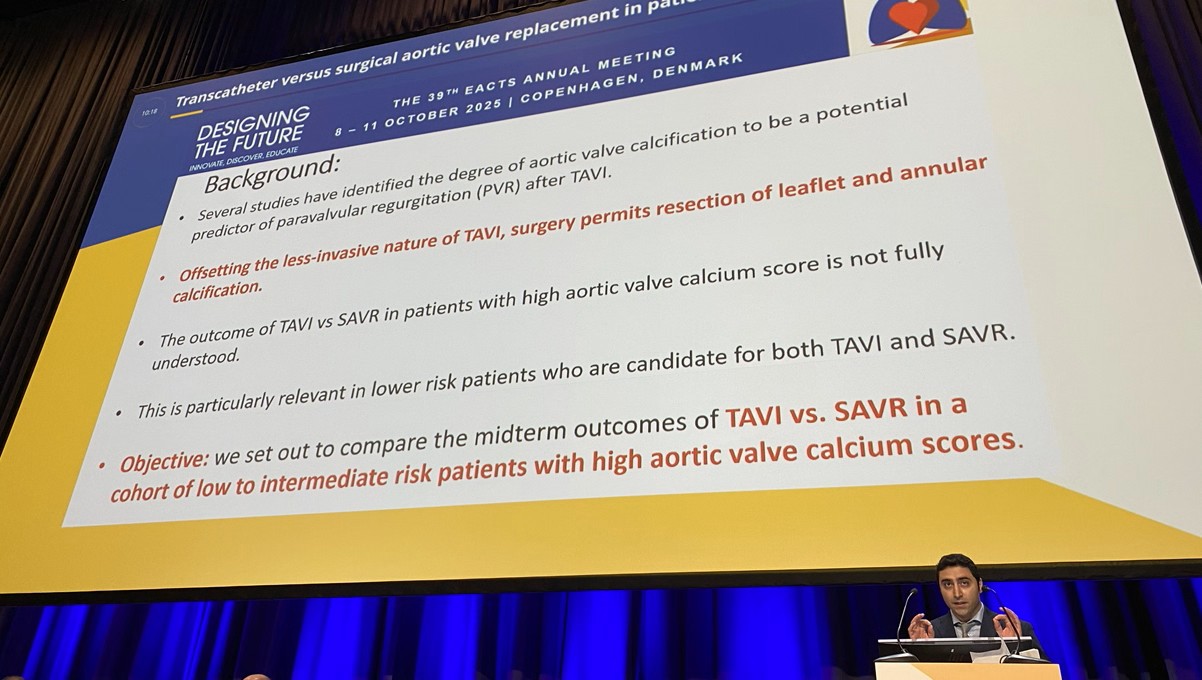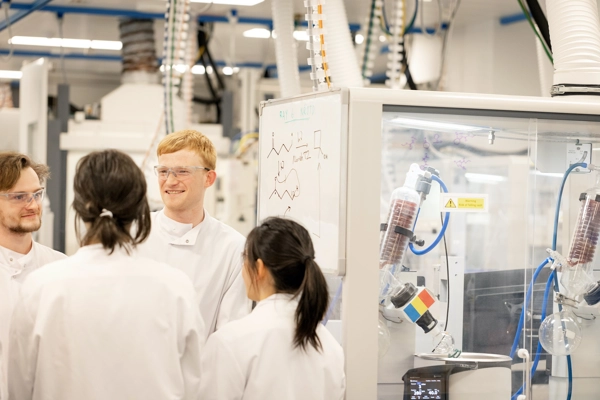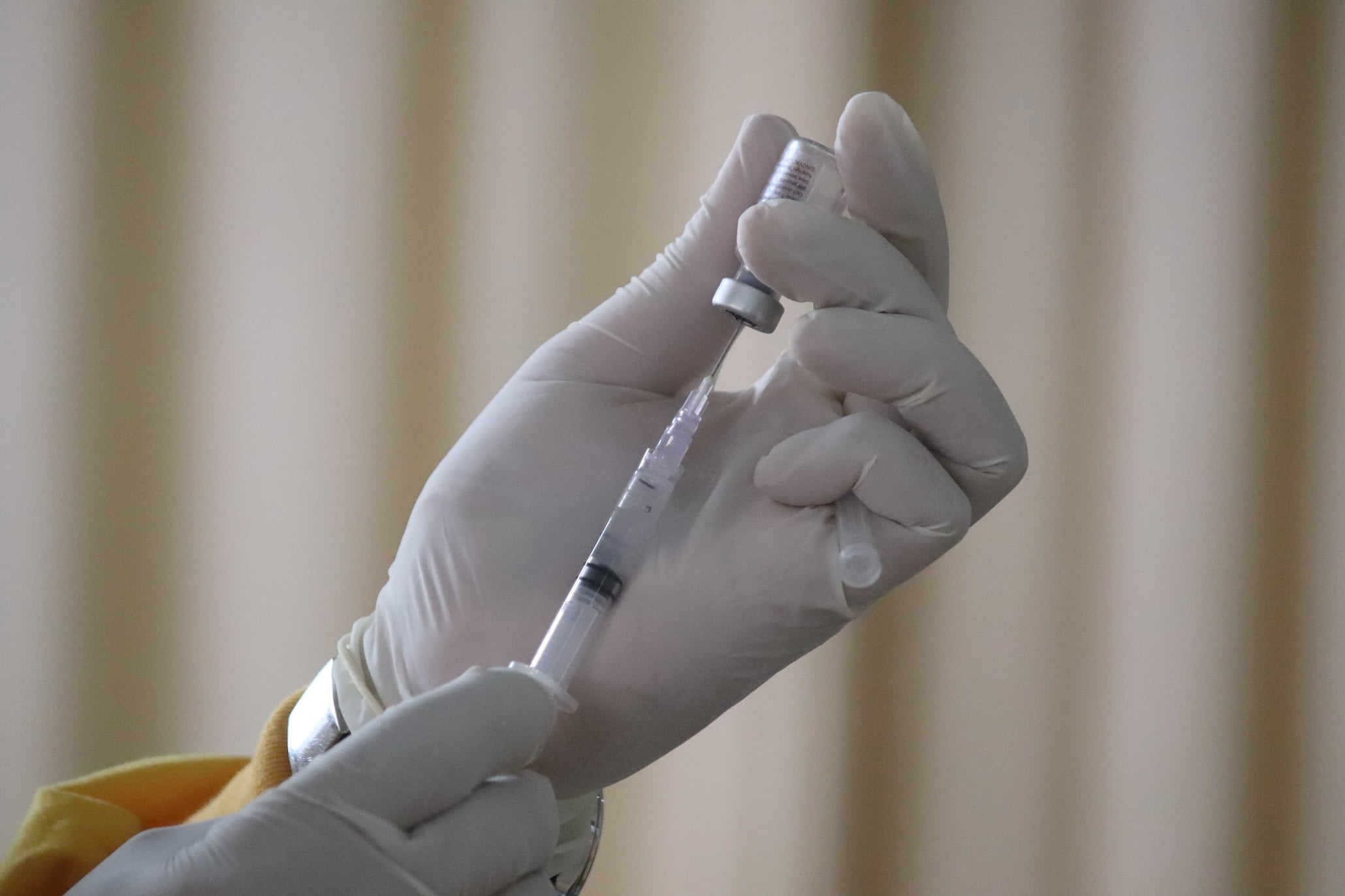West Ham fans picked the right night to stage a boycott as their side slumped to a dispiriting 2-0 defeat at home to Brentford.
Goals from Igor Thiago and Mathias Jensen were enough to secure a…

West Ham fans picked the right night to stage a boycott as their side slumped to a dispiriting 2-0 defeat at home to Brentford.
Goals from Igor Thiago and Mathias Jensen were enough to secure a…

Bictegravir belongs to a class of anti-HIV drugs called integrase inhibitors. It is co-formulated into one pill called Biktarvy, which contains the following medicines:
In clinical trials,…

If you typically don’t consider oropharyngeal cancer as a potential risk among your patients living with HIV, results from a new meta-analysis suggest it’s time for a rethink. Incidence of this HPV-associated cancer was unexpectedly high in…
This request seems a bit unusual, so we need to confirm that you’re human. Please press and hold the button until it turns completely green. Thank you for your cooperation!

COPENHAGEN, Denmark—Among patients with severe aortic stenosis at low- or intermediate-risk for surgery who also have very calcified aortic valves, SAVR is associated with lower risks of all-cause mortality, paravalvular regurgitation, and heart failure hospitalization compared with TAVI, according to new single-center data.
“[A] calcium score could potentially be an important criteria to consider when deciding between TAVI versus SAVR in low- and intermediate-risk patients,” said Fadi Hage, MD (Lankenau Medical Center, Wynnewood, PA), who presented the findings at the 2025 European Association for Cardio-Thoracic Surgery meeting. “Further investigation into predictors of outcomes in lower-risk patients is warranted to improve patient selection and [make] a more informed heart team discussion.”
Session moderator Alicja Zientara, MD (Universitätsklinikum Freiburg, Germany), said the results highlight the need for imaging in assessing patients for TAVI.
“It’s not only about the clinical risk factors of patients and choosing the right valve, but very much about imaging and evaluating if a TAVR is very well feasible for a patient,” she told TCTMD. “We know that there is a risk of aortic regurgitation and there is a risk of pacemaker, and not every patient necessarily is the right one for this kind of treatment. So, we as surgeons have to work very much on implementing regular imaging in our daily practice to also evaluate the valve, like cardiologists do.”
Better Outcomes With SAVR
The analysis included 227 patients who underwent TAVI (mean age 82 years; 77% male) and 99 who had SAVR (mean age 68 years; 88% male) at their institution between June 2021 and December 2023. All patients were considered low-to-intermediate risk for surgery and had a high aortic valve calcium score (≥ 3,000 Agatston units). More patients in the TAVI arm had peripheral vascular disease (20% vs 6%) and fewer had bicuspid aortic valve anatomy (4% vs 39%) than in the surgery arm.
In a propensity score-matched analysis, survival at 2 years was higher in the SAVR arm compared with TAVI (HR 0.17; P = 0.001). The same relationship was seen for freedom from paravalvular regurgitation (HR 0.05; P = 0.001) and heart failure rehospitalization (HR 0.33; P = 0.045). Unadjusted analyses showed advantages for SAVR over TAVI with regard to survival and freedom from paravalvular regurgitation, but not freedom from heart failure rehospitalization.
There was a higher risk of new permanent pacemaker with TAVI compared with SAVR at 30 days (16% vs 6%; P = 0.01), but a lower rate of postoperative transfusion (7% vs 36%; P < 0.001).
During the discussion, session panelist Ferdinand Vogt, MD (Paracelsus Medical University Nürnberg, Germany), pointed out a challenge for surgeons. “In the real world, we don’t have for every surgical patient an Agatston score,” he said, questioning whether this creates a “bias” in real-world practice when patients are deciding between TAVI and surgery.
“It would be an important thing to consider,” Hage responded, adding that it’s not “very difficult to get” this information.
In an informal poll of the audience, about one-third in the room raised their hands indicating that they do send patients for calcium score imaging before the procedure.
Zientara said she was “a little” surprised by how few of the attendees use this kind of imaging in their workups. “But on the other hand, it’s always a hot topic,” she added. “We have new guidelines for the treatment of those patients where there are different opinions.”
Panelist Gregory Fontana, MD (Cardiovascular Institute of Los Robles Health System, Thousand Oaks, CA), commented that CT scans prior to SAVR have “become the gold standard” at his institution.
Hage, too, said he calculates his own CT measurements for each patient, enabling him to be “nonbiased.” As surgeons, he added, “we should select the right procedure for the right patients.”

WASHINGTON — NASA’s acting administrator says he plans to “open up the contract” SpaceX holds to land astronauts on the moon for the Artemis 3 mission because the company has fallen behind schedule.
In appearances on CNBC and Fox News on Oct. 20, NASA Acting Administrator Sean Duffy said NASA would allow other companies to compete to land astronauts on the moon for Artemis 3, a mission currently assigned to SpaceX’s Starship under a Human Landing System (HLS) contract awarded in 2021.
“SpaceX had the contract for Artemis 3,” Duffy said on CNBC. “The problem is they’re behind. They push their timelines out, and we’re in a race against China. The president and I want to get to the moon in this president’s term.”
“So, I’m going to open up the contract,” he continued. “I’m going to let other space companies compete with SpaceX, like Blue Origin, and again, whatever one can get us there first, to the moon, we’re going to take.”
Duffy made similar remarks on Fox News. “SpaceX has the contract. SpaceX is an amazing company. They do remarkable things, but they’re behind schedule,” he said. “So, I’m in the process of opening that contract up.”
“We’re going to have a space race in regard to American companies competing to see who can actually get us back to the moon first,” he said.
Duffy did not explain how such a “space race” would work or how it would be funded. Asked for further details, Bethany Stevens, NASA’s press secretary, provided only transcripts of Duffy’s television appearances. Most of NASA’s public affairs staff are currently furloughed because of the government shutdown that began Oct. 1.
The comments are the first public acknowledgment by NASA’s acting leader that development of the HLS version of Starship is behind schedule. Duffy previously maintained that Artemis 3 would launch in 2027, the agency’s official target, even as multiple Starship test flight failures earlier this year made that timeline increasingly unlikely.
In late July, Duffy told social media influencers attending the Crew-11 launch that SpaceX executives, including company president Gwynne Shotwell, assured him Starship would be ready for Artemis 3. “They feel very comfortable on Starship. They feel like they’re on pace for the lander,” he said then. “They said if there’s a holdup for Artemis 3, it’s not going to be them.”
After former NASA Administrator Jim Bridenstine told a Senate committee in September it was unlikely the United States would return humans to the moon before China’s first crewed landing, Duffy pushed back. “We are going to beat the Chinese to the moon. We are going to make sure that we do this safely. We’re going to do it fast. We’re going to do it right,” he said in an internal NASA town hall, without suggesting a change in approach for Artemis 3.
In his Oct. 20 interviews, Duffy acknowledged that Artemis 3 likely would not launch in 2027. On CNBC, after discussing Artemis 2’s planned launch as soon as next February, he said that “Artemis 3 comes a couple years after that.”
One of the competitors Duffy mentioned was Blue Origin, which has a separate HLS award to develop its Blue Moon Mark 2 lander for missions beginning with Artemis 5. The company reportedly has studied ways to adapt its smaller Blue Moon Mark 1 lander for a crewed mission, although one industry source described those concepts as “jury-rigged” and noted that Mark 1 currently cannot lift off from the lunar surface with any useful payload.
Other companies are also examining lunar lander concepts. “Throughout this year, Lockheed Martin has been performing significant technical and programmatic analysis for human lunar landers that would provide options to NASA for a safe solution to return humans to the moon as quickly as possible,” Bob Behnken, vice president of exploration and technology strategy at Lockheed Martin Space, said in a statement.
“We have been working with a cross-industry team of companies, and together we are looking forward to addressing Secretary Duffy’s request to meet our country’s lunar objectives,” he said, without providing details about the Lockheed lander concept.
SpaceX Chief Executive Elon Musk appeared unconcerned about potential competition. “They won’t,” he said in a social media post responding to a comment that it was “silly” to think another company would have a lander ready before Starship. “SpaceX is moving like lightning compared to the rest of the space industry.”
“Moreover, Starship will end up doing the whole moon mission. Mark my words,” he added.

A large chunk of suspected space debris has been found in a remote part of the Australian desert, the country’s space agency confirmed Monday.
The charred and smoldering object was found in the Pilbara region of Western Australia, according to…
This request seems a bit unusual, so we need to confirm that you’re human. Please press and hold the button until it turns completely green. Thank you for your cooperation!

LONDON/GENEVA – The Global Fund to Fight AIDS, Tuberculosis and Malaria (the Global Fund) today welcomed a new £6 million investment by GSK plc (LSE/NYSE: GSK) and ViiV Healthcare, the global specialist HIV company majority owned by GSK, with Pfizer and Shionogi as shareholders, to strengthen community-led responses to HIV, tuberculosis (TB) and malaria in lower income countries. The commitment will be matched by the Gates Foundation, bringing this total investment in the Global Fund to £12 million.
Deborah Waterhouse, CEO, ViiV Healthcare and President, Global Health GSK said: “We are proud to deepen our partnership with the Global Fund through this catalytic investment, which will help accelerate community-led responses to high burden infectious diseases such as HIV, tuberculosis, and malaria. We believe that sustainable health impact begins with empowering communities and the local organisations that know them best. By supporting programmes that are led by countries, community-owned and community-driven, we’re helping to build stronger, more resilient health systems where they’re needed most.”
The Rt Hon Yvette Cooper MP, Foreign Secretary for the United Kingdom, said: “The Global Fund has saved 70 million people from AIDS, TB and malaria since 2002. But the fight isn’t over. Climate change is contributing to a rise in malaria cases, HIV stigma still stops people from seeking treatment, and TB kills more people than any other infectious disease.
“As the UK co-hosts the Global Fund’s 8th replenishment with South Africa, it’s really welcome and important to see British business stepping up. Private sector investment and innovation is key to finding new treatments, improving access to care and ultimately ending AIDS, TB and malaria – because we know that global challenges won’t be solved if we wait until they land on our own doorstep.”
The announcement was made at a high-level event in London, marking a key milestone on the road to the 8th Replenishment Pledging Summit in November. The event showcased the power of partnership and solidarity to end AIDS, TB and malaria, building on recent momentum, catalyzing further commitments, and positioning the campaign for a successful pledging summit.
The Global Fund’s 8th Replenishment, which will finance programmes for the 2027–2029 grant cycle, is being co-hosted by the Republic of South Africa and the United Kingdom. With just five weeks to go until the Replenishment Summit, the Global Fund has raised over US$3billion, including more than US$1 billion from private sector donors – a significant portion of which has come from British philanthropy.
Hon. Ronald Lamola, Minister of International Relations and Cooperation of the Republic of South Africa, said, “South Africa is proud to co-host the Global Fund’s 8th Replenishment, and we welcome the renewed commitment from GSK and ViiV Healthcare to innovation and equity in global health. Partnerships like these — between governments, the private sector, and communities — are essential to sustain progress against HIV and malaria. As we look toward the pledging summit, South Africa calls on all partners to match this spirit of solidarity and ambition, so that together we can build a healthier, more resilient world for all.”
GSK and ViiV Healthcare have long led innovation in the fight against HIV, malaria and TB, developing solutions that have helped to reduce the burden on communities most affected by highly prevalent infectious diseases. Their advances include a portfolio of medicines and vaccines which are used in the global setting for the treatment and prevention of diseases such as malaria and HIV, and a pipeline which includes research programmes for a next generation malaria vaccine and HIV medicines, and a vaccine candidate for TB – being developed in partnership with Gates MRI, Gates Foundation and Wellcome, all aimed at helping to accelerate the progress toward ending these diseases.
“The Global Fund continues to demonstrate how partnership can drive innovation and deliver impact where it’s needed most,” said Joe Cerrell, Managing Director, Europe, the Middle East and East Asia of the Gates Foundation. “As part of our ongoing commitment, we’re announcing up to $100 million in matching funds to unlock greater private and philanthropic investment. We’re proud that the first contribution – £6 million from GSK and ViiV Healthcare – will activate this matching support. This collaboration underscores the Global Fund’s unique ability to turn bold ideas into real-world results, and we hope it will inspire others to join us in accelerating progress against HIV, TB, and malaria.”
Through this new investment with the Global Fund, GSK and ViiV Healthcare are continuing to go beyond scientific innovation, to help improve health outcomes for communities in lower income countries. The funding will support locally led partners and programmes accelerating progress in some of the world’s most affected regions. This commitment reinforces the vital role of grassroots leadership in shaping sustainable health solutions and comes at a pivotal time in the global health response, when catalytic funding for community-owned and community-led change is more important than ever.
“This commitment from GSK and ViiV Healthcare sends a powerful message – when public and private actors unite around a shared vision, we can drive real, lasting change,” said Peter Sands, Executive Director of the Global Fund. “We deeply appreciate their generosity and leadership at this critical moment. The innovation of the private sector is central to our partnerships progress, and the renewed pledge will continue our work to ensure those most impacted by infectious diseases, including women and girls, can access the best care when they need it.”
Catalytic funds, such as the one supported through this new pledge, are designed to tackle high-impact, high-priority initiatives that complement country allocations – driving innovation and accelerating progress in areas where it is most needed, for underserved communities.
Early and ambitious private sector commitments like this one are instrumental in building momentum, strengthening confidence in collective action, and inspiring others to contribute to the global effort to end HIV, TB, and malaria.

Virologic rebounds following mpox vaccination appear to be uncommon in people living with HIV (PLWH), according to a new study presented by investigators with the Fondazione Policlinico A. Gemelli IRCCS and the Università Cattolica del Sacro…